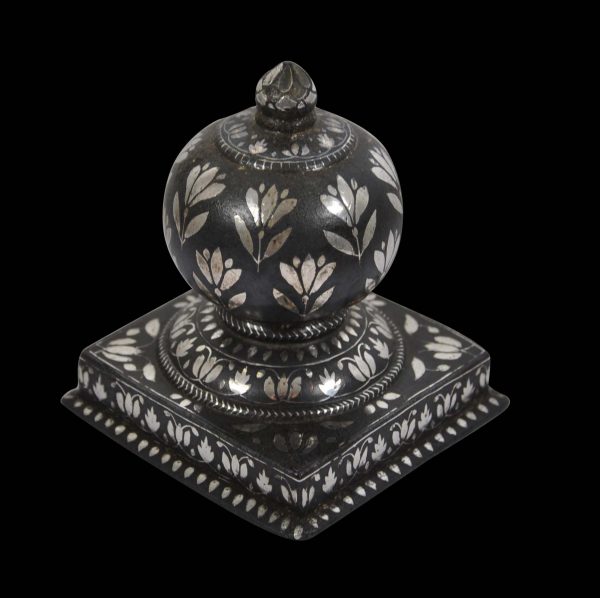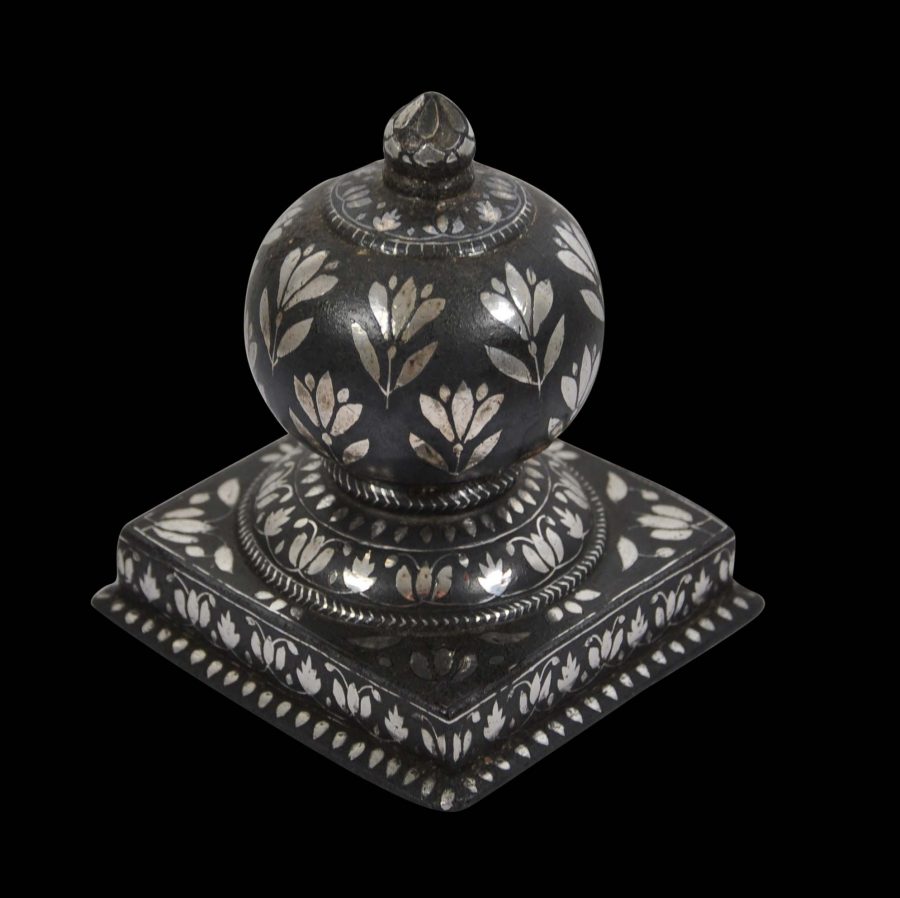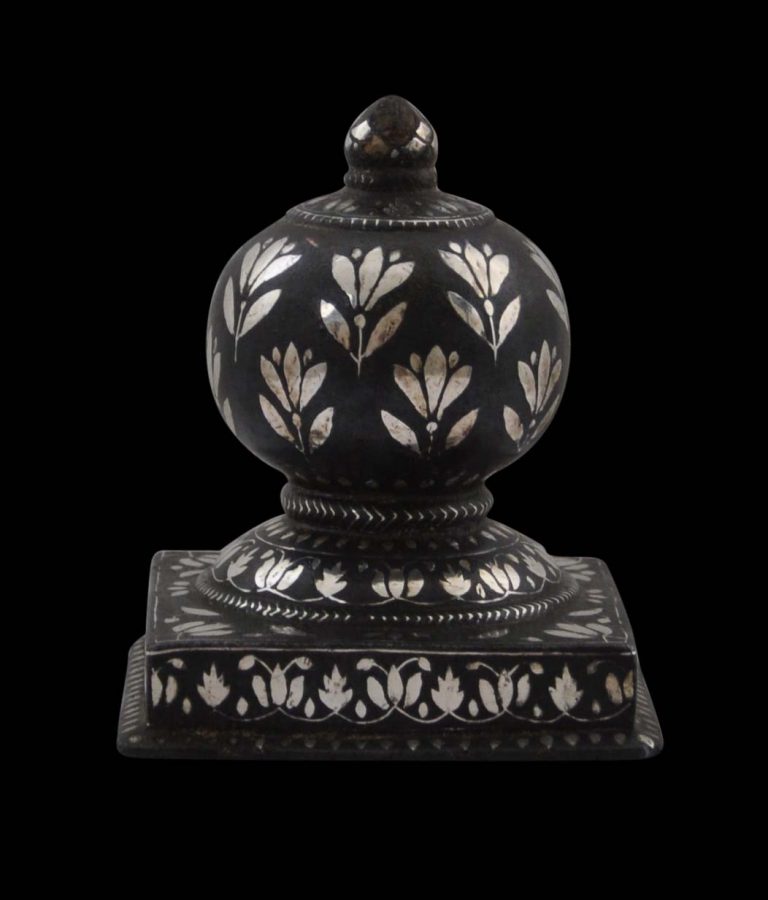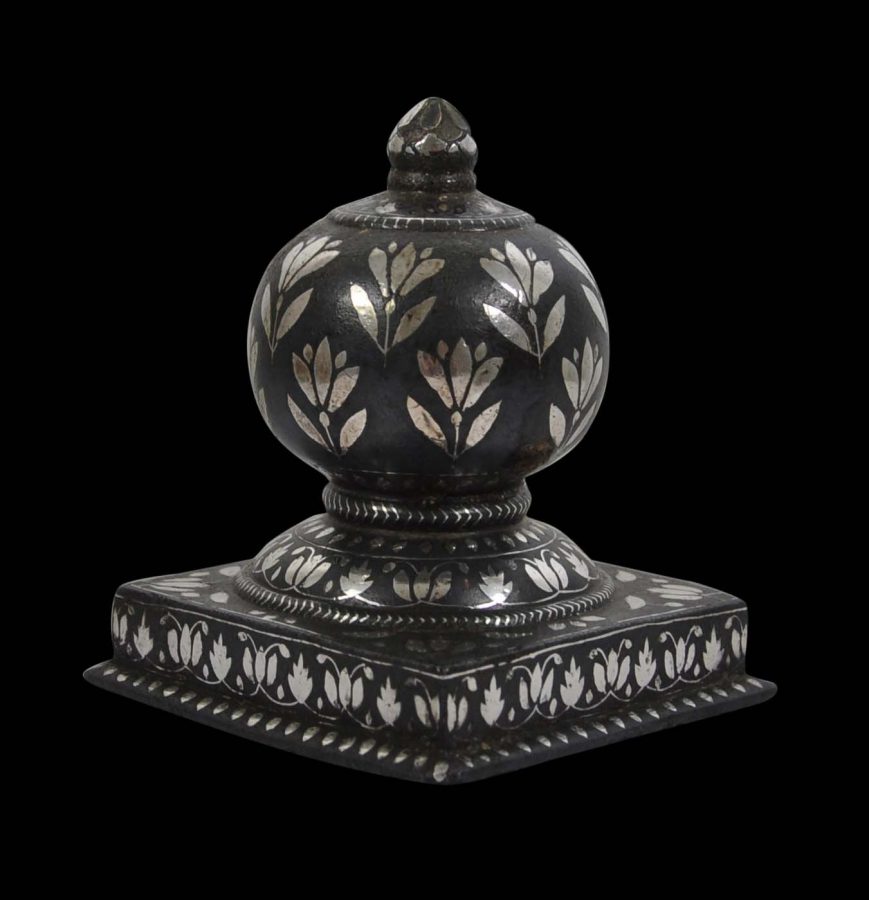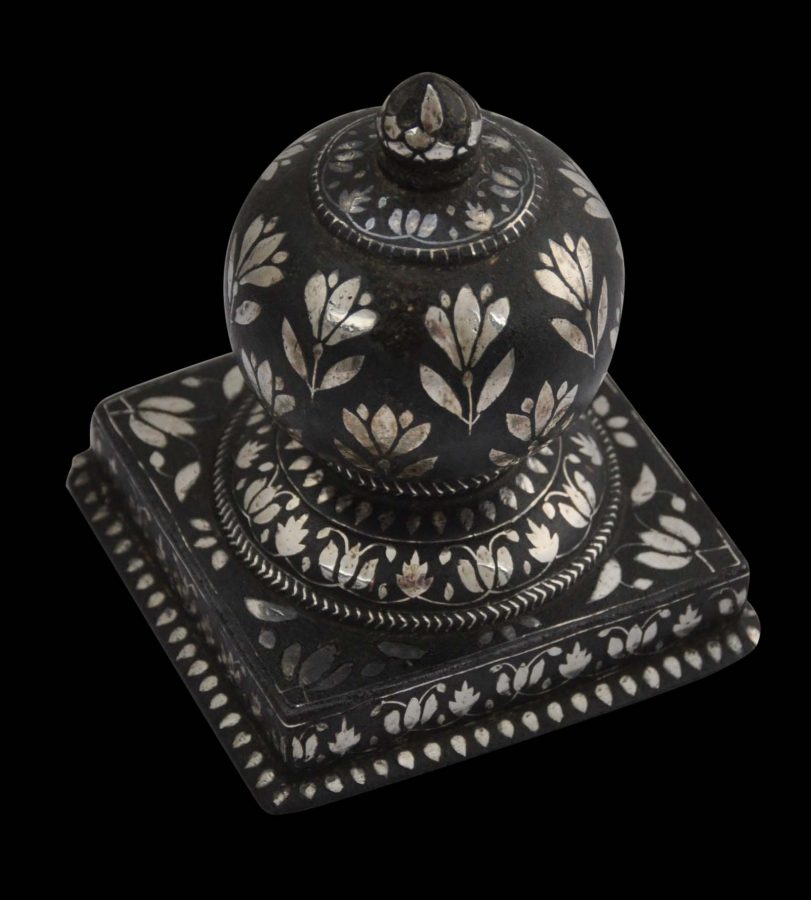This weight would have been one of a set of four or even more. It comprises a square base and a domed top with a small. bud-like finial. It is decorated using the silver-inlaid Bidri technique – the silver motifs include three-petalled flowers and floral scrollwork.
The weight has thick walls but is hollow.
Such weights were called rather poetically mir-i-farsh or ‘slaves of the carpet’ and they were placed not so much on carpets but on the corners of light summer silk or cotton floor coverings, often embroidered, to hold them in place, which otherwise might be caught by light breezes from open windows and terraces. Such coverings were spread over the marble floors of palaces and also the tombs of Muslim saints and other mausoleums. Not all were made of bidri. Others were made of stone, brass, bronze and even glass.
Bidriware originated in the city of Bidar in the Deccan. It is cast from an alloy of mostly zinc with copper, tin and lead. The vessels so decorated are overlaid or inlaid with silver, but also sometimes brass and gold. A paste that contains sal ammoniac is then applied which turns the alloy dark black but leaving the silver, brass or gold unaffected.
The example here is in fine condition. There are minor losses to the silver inlay. The weight is old and its age is obvious. It is a fine piece.
References
Mittal, J., Bidri Ware and Damascene Work: in Jagdish & Kamla Mittal Museum of Indian Art, Jagdish & Kamla Mittal Museum or Art, 2011.
Okada, A., L’Inde des Prices: La Donation Jean et Krishna Riboud, Tresors du Musee Guimet, 2000.
Stronge, S., Bidri Ware: Inlaid Metalwork from India, Victoria & Albert Museum, 1985.
Zebrowski, M., Gold, Silver & Bronze from Mughal India, Alexandria Press, 1997.


